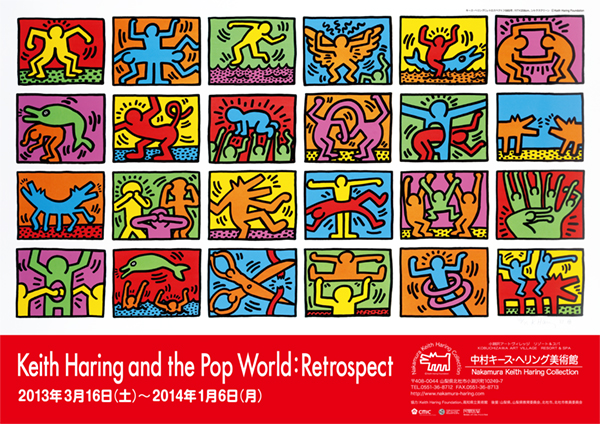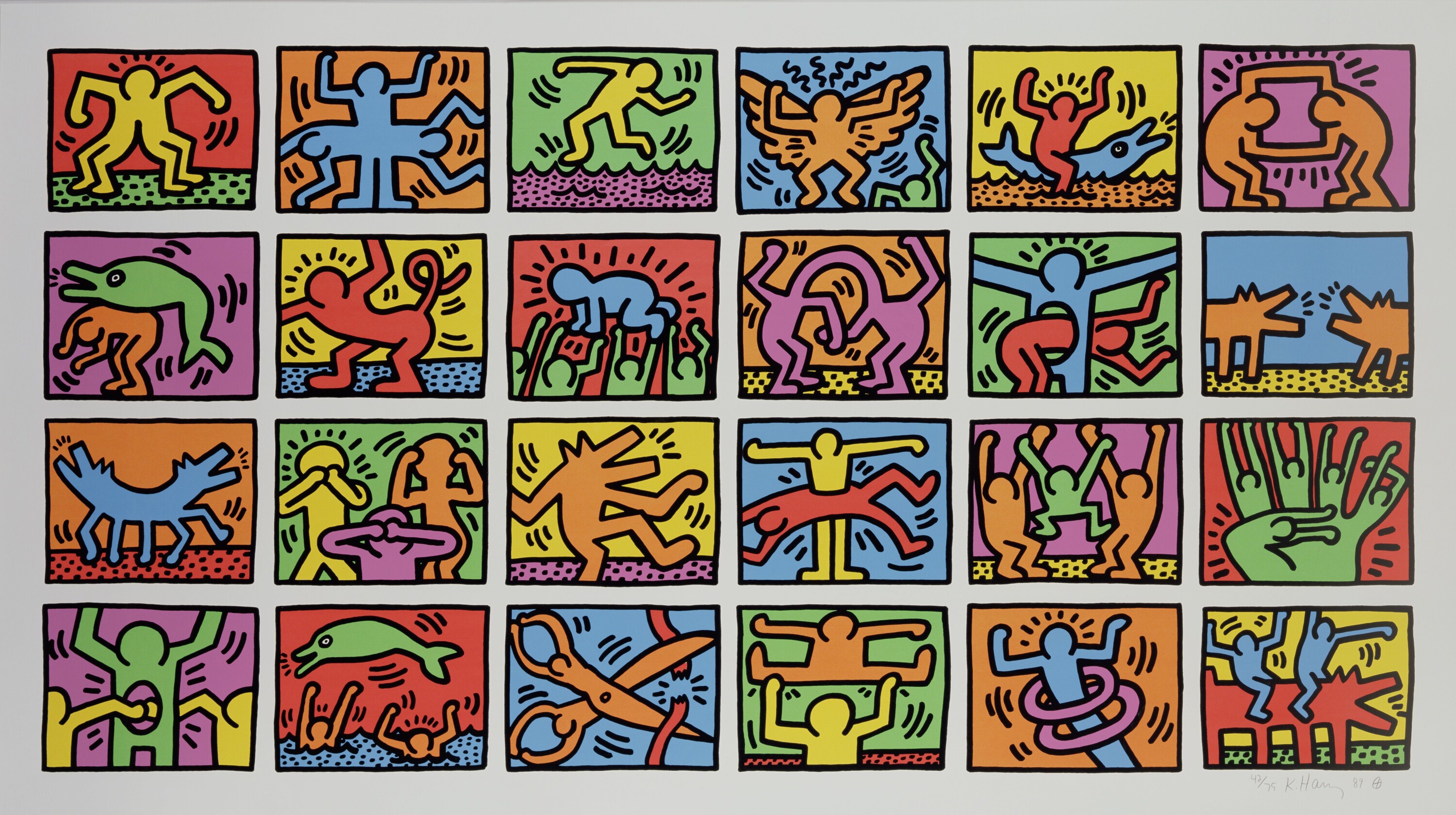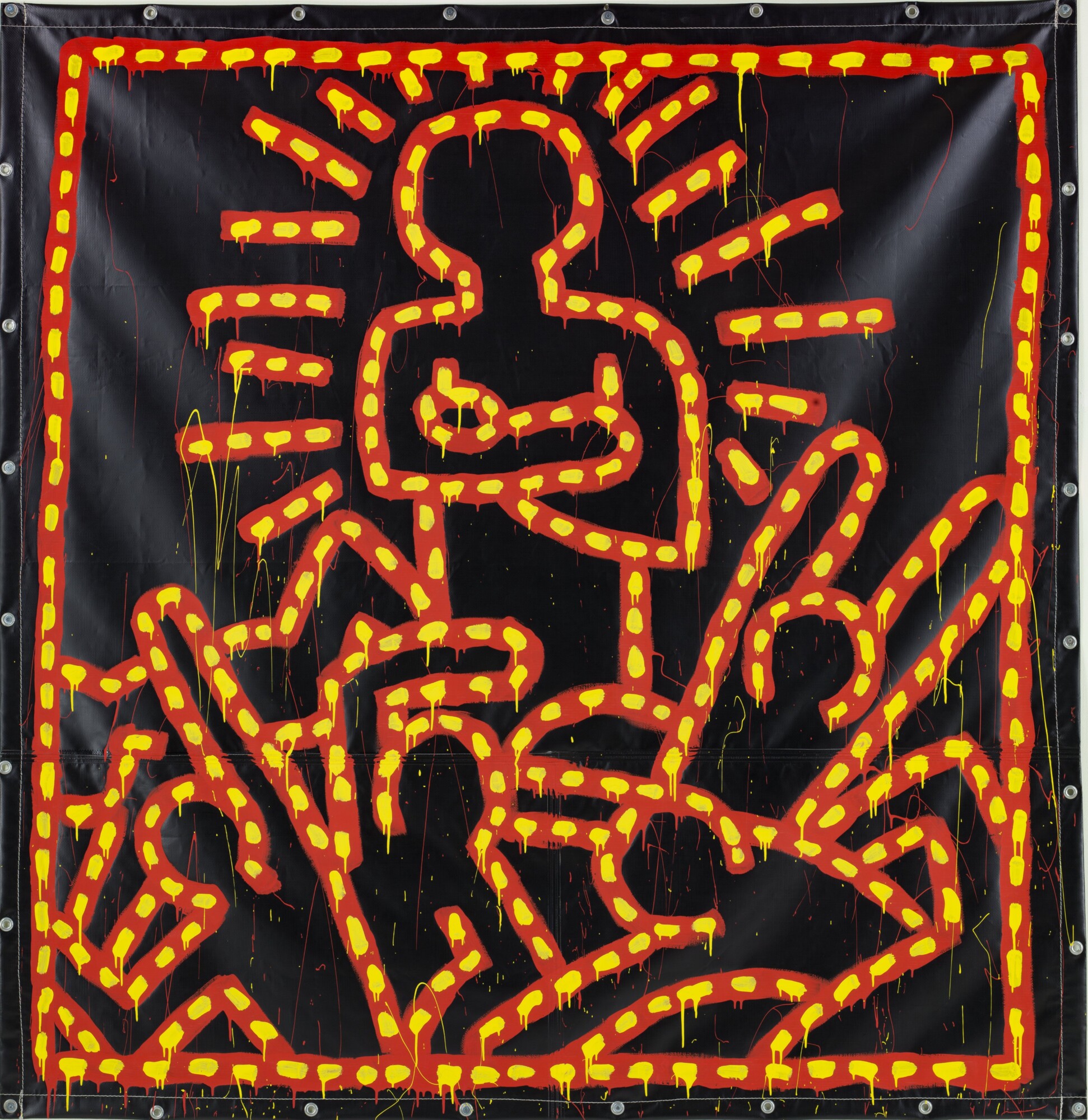
Keith Haring and the Pop World: A Retrospective
Supported by: Yamanashi Prefecture, Yamanashi Prefectural Board of Education, Hokuto City, Hokuto City Board of Education, Medical Principle Co., Ltd.
In Cooperation with: Kochi Prefectural Museum of Art
The 2013 exhibition, Keith Haring and the Pop World: A Retrospective, revisits the pop world that Keith Haring built as he rose from New York’s vibrant art scene of the 1980s to global prominence.
One of the focal points of this exhibition is a painted tarpaulin artwork from 1982, created for Haring’s first solo exhibition at Tony Shafrazi Gallery in New York (collection of the Kochi Prefectural Museum of Art). Haring frequently used unconventional materials such as tarpaulins, typically used as truck covers, as his canvases. Rather than adhering to traditional art materials, he intentionally transformed everyday objects into the medium for his work. By the time of this exhibition, Haring had already garnered attention within New York’s art scene through his Subway Drawings. Created on black poster paper covering vacant advertising panels in subway stations, these chalk drawings carried direct, witty messages distinct from the tag-heavy graffiti dominating street art at the time. His Subway Drawings can be considered a form of political art aimed at the public.
At Shafrazi Gallery, Haring went beyond merely exhibiting drawings, sculptures, and paintings—he turned the gallery into an immersive space by painting directly onto the walls, transforming it into an almost club-like atmosphere. This innovative approach challenged traditional notions of art exhibitions, reshaping the boundaries of painting, sculpture, and graffiti.
This year’s exhibition also debuts one of Haring’s most significant prints, Retrospect, from the museum’s collection. Created in 1989, a pivotal year globally, the work reflects the end of the Cold War, the fall of the Berlin Wall, the Tiananmen Square protests, and the conclusion of the Reagan administration in the United States. Amid these shifts, the Japanese economy was booming, and the emergence of the tech industry was heralding an era of rapid transformation. For Haring, 1989 marked the culmination of his creative journey through the tumultuous 1980s.Retrospect is a summation of Haring’s recurring themes, encapsulating his iconic human and animal figures in a strikingly concise and pop-inspired style. Among its elements is a nod to Pop Shop, Haring’s project aimed at making art accessible to the public, which challenged the commodification of street art in the burgeoning art market. The work embodies Haring’s attempt to expand the boundaries of his art and his identity as an artist within his short lifetime. Each scene within the print is imbued with dynamic, lively depictions, reflecting the enduring vitality of Haring’s work.
FEATURED ARTWORKS





